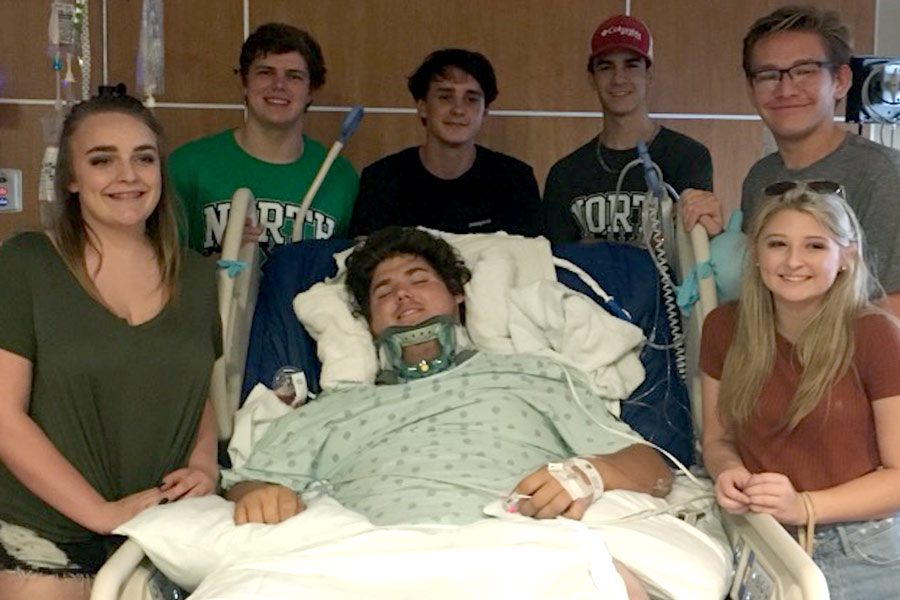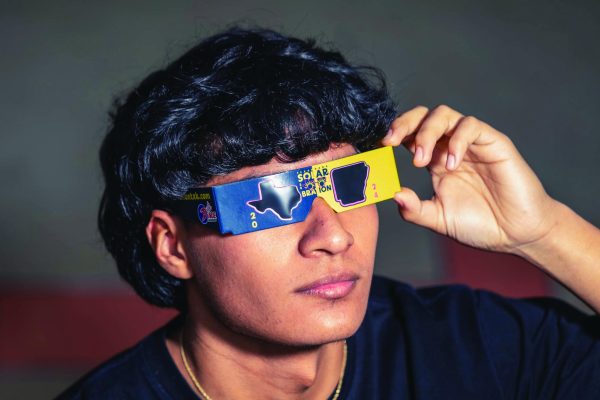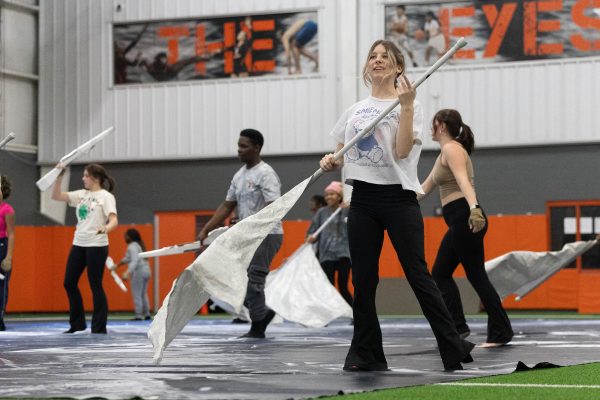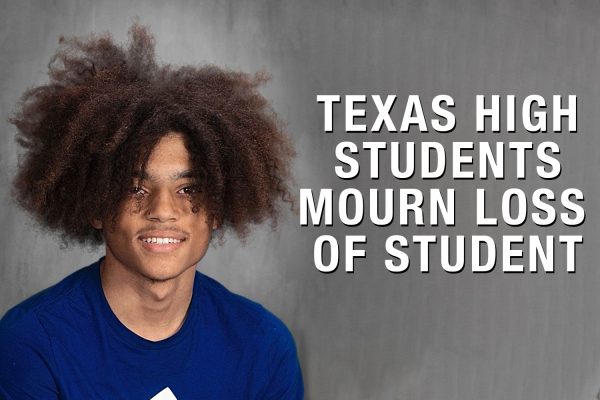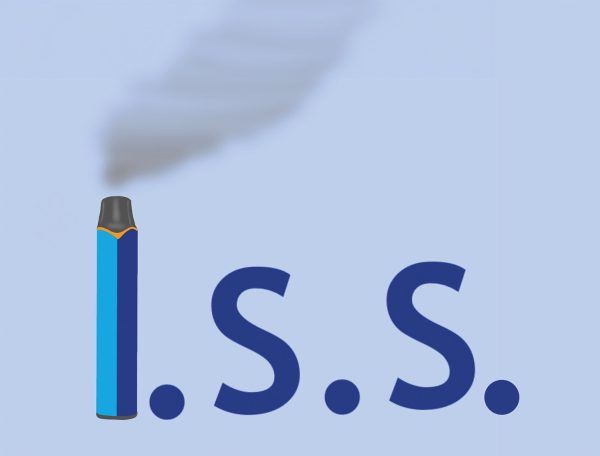Senior discusses serious diving accident, recovery
Mayten Lumpkin lies in his hospital bed surrounded by his friends. Pictured left to right are Rachel Sorenson, Bryan Lovell, Connor Anderson, Grant Owens, Dalton Dickson and Jera Davis. Submitted Photo.
December 1, 2016
The sun is shining, glistening off the blue pool water, and water splashing up from the massive cannonballs. A bright, hot afternoon with friends soon turned dark when senior Mayten Lumpkin struck his head on the bottom of the pool resulting in paralysis.
“We were chilling and then Jera came over, Connor’s girlfriend,” Lumpkin said. “We were like well, we aren’t just going to sit here, so we went and swam.”
Their afternoon soon turned tragic after Lumpkin dove across the shallow end and hit his head.
“When I dove back in, I went a little bit too hard, hit the top of my head, did a half front flip and instantly went paralyzed,” Lumpkin said. “From that point I just held my breath, floated to the top and then I rolled over somehow. I got my mouth and nose out of the water, my mouth was actually bleeding because I bit my tongue, and so when I called Connor for help, he knew I was serious because he could see the blood.”
Seniors Connor Anderson and Rachel Sorenson quickly jumped in the water to help Lumpkin while junior Jera Davis went to call for help.
“[Connor] was sitting at the shallow end and he jumped right in, came and got me and pulled me into the shallow end,” Lumpkin said. “Then Rachel held my head, and he held my body while Jera went and got his mom, then she got a raft to put under me and we waited for the paramedics to come.”
Despite Lumpkin’s requests to get out of the pool, Anderson insisted he stay stabilized in the pool, ultimately saving his life. Anderson, Sorenson and Davis were awarded Lifesaving awards by LifeNet shortly after the accident.
“Connor was like ‘Dude, I’m not moving you out of this pool. I’m stabilizing your head. You’re not moving your neck,’” Lumpkin said. “They got lifesaving awards on TigerVision, and they deserve them. The guy that was on my ambulance, Bruce, was like I don’t know if your friend is a nurse or what, but he probably just saved your life.”
Shortly after paramedics arrived, Lumpkin was transferred to CHRISTUS St. Michael’s emergency department where many friends and family waited for news.
“I went to St. Michael’s and got an MRI and CAT scan. When I got done with my MRI, Kyle Jean’s dad was there. He wasn’t on call, but Kyle called him and he came right in,” Lumpkin said. “Apparently, there was a waiting room full of a lot of my friends and my parents’ friends.”
Once the St. Michael’s doctors assessed Lumpkins injuries, he was airlifted to Parkland Memorial Hospital in Dallas, a level one trauma center where they performed his surgery.
“I broke my C5 and C6, which are two vertebrae in my neck. I shattered them and fractured them in multiple places. I was paralyzed from the neck down. I went to St. Michael’s right then. They realized they didn’t have the equipment or the doctors to be able to do the surgery,” Lumpkin said. “They flew me out in a small, little helicopter and they barely fit me in, and then I had the surgery the next morning.”
During Lumpkin’s surgery at Parkland, they repaired his vertebrae with rods, screws and pins.
“One of the disc was so crushed they couldn’t screw to it so they had to use cadaver bone, and then I have rods from C3 all the way to T1,” Lumpkin said. “After the surgery, I could just barely flinch my shoulders. I stayed at Parkland for about 18 days, and then they took me in an ambulance from Dallas to TIRR in Houston.”
Lumpkin stayed at TIRR, The Texas Institute for Research and Rehabilitation, for phase one of physical and occupational therapy and will return in December for phase two of his rehabilitation.
“We did range of motion exercises, stretching, strengthening muscles and stimulation of legs and hands,” Lumpkin said. “We would practice what we call transfers with a slide board, and sit me up on a mat and I’d have reach out to work the core. We worked on balance stuff. It’s different every day. We worked a lot of upper body, so if you never get your legs back, you can still be independent and do some stuff at least.”
At TIRR Lumpkin remained on the spinal injury floor where he met people with similar injuries.
“Going to TIRR really showed me that I’m so lucky to have all my mental capabilities,” Lumpkin said. “Never take life for granted because you never know when you could lose it.”
Although doctors don’t know if Lumpkin will ever fully recover, he has made significant progress since the surgery.
“They told me since day one that they really didn’t know, but I’ve never heard that I would never walk again or never get any better,” Lumpkin said. “In fact, most of what I’ve gotten has been encouraging. When I left TIRR, [the nurses] said as far as I’ve come they don’t see where I wouldn’t be able to walk again, so I keep my spirits high.”
Despite Lumpkin’s current positivity toward his recovery, he hasn’t always been optimistic.
“I was mad at everything and didn’t understand why it happened to me. Getting over the shock of it, I realized that it wasn’t helping anyone, including me,” Lumpkin said. “It wasn’t helping me feel any better, it definitely wasn’t helping me get my legs back, and it was making everyone that was trying to help me miserable and mad at me. So one day I was like, I’m done being mad.”
Lumpkin now has remained positive through his recovery, but not knowing if he will regain full function makes it difficult.
“Never knowing if I’ll be able to walk again is the hardest part. Will I ever be able to be fully independent, will I always need an assistant, will I ever be able to get a good job? I don’t know,” Lumpkin said. “It sucks because you never get closer. For the rest of my life I’ll never know. I could be 47 sitting in my room and all of a sudden my toe wiggles and I’ll be able to walk again, but I have no idea [when I’ll walk again].”
Throughout Lumpkin’s injury and recovery, he has had growing support from friends, family and the community.
“Without the support from everyone, especially my family but the school too, the Facebook page, I don’t know if I could make it through,” Lumpkin said. “If I was by myself, I would might as well give up now. The support system I have as far as my friends at school and my family is amazing.”
Despite doctors not giving him a recovery timeline, Lumpkin has developed function in his upper body.
“As far as I know, I’ve been able to feel touch since the surgery. I’d know you set something on my leg, but I couldn’t tell you it was an ice pack or if it was a burning hot stove. I’m getting more feeling in the midsection, but as far as my legs, I can’t move them or anything yet. We are hoping [the sensation] is gonna start moving down,” Lumpkin said. “The higher you go the more sensation I have. Even on one side of my hand I could feel if it was an ice pack, but on the other side, I couldn’t. All my upper body, my arms and shoulders, I can feel hot and cold, everything. The lower you go the less sensation I have as far as hot and cold goes.”
Lumpkin is now residing with his family in Texarkana where he will re-enroll in TISD and begin homebound services. While in Houston, he received homebound instruction from Houston ISD.
“For four weeks I couldn’t do anything, so I was really behind, but when I got to Houston I got totally caught up,” Lumpkin said. “I’m on track to graduate in May. On Monday I’m re-enrolling in TISD and then doing homebound here until I go back to TIRR in late December. After I finish [rehab], I will come back before Sadie, and then I will hopefully re-enroll back in school, but we will have to see how much I can do.”
Lumpkin and his family are still planning on him graduating on time and going to college.
“My goal is to walk across the stage in May,” Lumpkin said. “That has been my goal since I started.”
Though he hasn’t been able to visit any colleges, Lumpkin is relying on his friends, like Anderson, for information about college visits.
“That’s my best friend, and if he liked [the college], I’ll probably like it,” Lumpkin said. “I’m definitely going to college. We will have to see how much better I get depending on if I can go off or not. Even if it is A&M here, even if it’s in a wheelchair, it’s a for sure.”
Through his recovery, Lumpkin has taken away many things from the process.
“I’ve learned that I have the greatest family and the best friends probably anybody can have,” Lumpkin said. “I’ve learned a lot of perseverance, both mentally and physically. You’ve got to persevere through the working out and then you’ve got to through the not knowing.”
For updates on Mayten’s recovery visit his facebook page, Prayers for Mayten.


